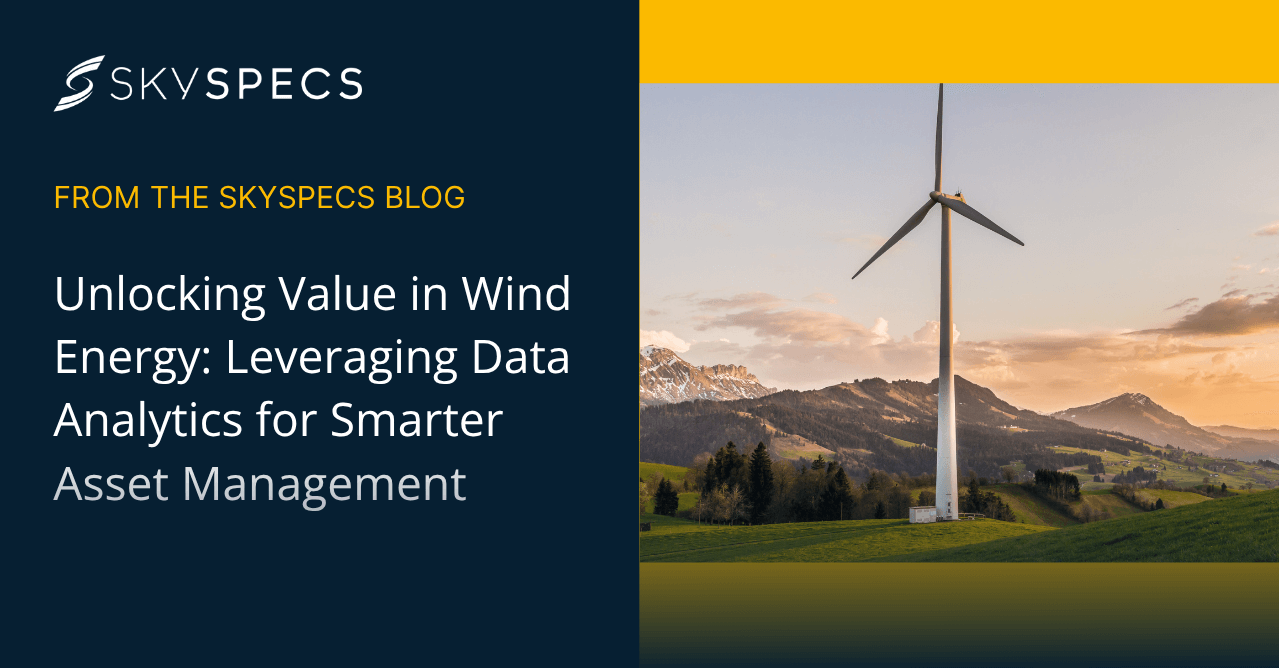The wind industry is undergoing significant change, but what are the main driving factors for this evolution? We wanted to take a closer look at the trends we’ve seen over the past year and share some thoughts on where we see the industry heading in 2024 and beyond.
Below, we share our main observations on the state of the industry today, as well as our top three predictions going forward.
The top wind industry observations that shaped 2023
- Maintenance of wind farms is still top of mind
Proper maintenance of wind farms has always been critical to ensuring farms are operating efficiently. However, the view within the industry has been that maintenance costs continue to grow and operators often don’t include how to fund it in negotiations of PPAs, farm acquisitions, and portfolio strategies.
The good news is that this does appear to be changing. We have been part of many discussions on this topic and have noticed that more in the industry are recognizing the fact that they need to fund predictive maintenance strategies.
As the industry continues to struggle with the reliability of its highest-cost main components and many wind turbines are failing earlier, many owner-operators are realizing they have underestimated the reality of the cost of ownership. Maintenance and repair costs are often higher than owners anticipate when investing in newer assets. This has forced owners to recalculate how they plan and fund maintenance and look for more efficient O&M operating models.
- Firefighting vs. strategic operational improvement
Reactive maintenance has been the status quo for the last decade, largely because operators are wary of the high costs of ongoing predictive maintenance and because industry incentives tend to promote short-term maintenance actions over long-term ones.
However, this has led many in the industry to spend more time “firefighting” than finding ways to strategically improve operations in the long run.
It becomes a cycle where O&M teams are stuck only fixing problems instead of preventing them with better strategies.
Reactive maintenance results in a higher total cost of ownership because smaller issues that could be spotted and repaired right away are left until they become much more expensive repairs that could even lead to shutdowns or blade failure.
Christopher Gray (VP of SCADA Analytics) said, “When any optimization or process improvement needs to be delayed to some undefined point in the future, then you’re in trouble. That signifies that the whole industry is in survival and firefighting mode.”
The top wind industry observations that shaped 2023
With the above trends in mind, our top predictions for the industry in 2024 are focused on maintenance strategies, talent management, and service contracts, which have all proven to be common challenges faced by O&M teams.
- Wind farm maintenance will become more strategic and predictive
As more and more owner-operators realize the importance of maintenance, predictive maintenance will become more of a focus. While predictive maintenance has high ongoing costs, it also helps to reduce the long-term costs of ownership in wind farms. New technologies centered around automation have even made predictive maintenance more achievable across the industry.
Aside from automation solutions, data collection and management are crucial for predictive maintenance. Data can help us to pinpoint potential issues across wind farms and particular models before they require more serious repairs – which can go a long way in helping operations teams manage budgets and the availability of maintenance engineers.
Sheryl Weinstein (Principal Blade Engineer) says, “Data can help us make decisions on how to maintain or make inspection strategies that will help us find things earlier in the game or focus on the problem areas. So, I think homing in more on the importance of inspection strategy that’s catered to the asset, the known issues, and what the data tells us will help lower that risk.”
When we schedule inspections throughout the year we should also be more strategic. Weather is a huge factor in determining when a repair crew can fix wind turbines, so it becomes challenging to get the timing right between the inspection, the weather, and the possible repair.
Sheryl highlights that the location of the wind farm should determine this. For example, a wind farm in Maine will have a very short repair window compared to a state in the south.
“Rather than everyone doing them simultaneously, think about location, your particular assets, what state of health they’re in, what the known issues are with them, and when to schedule inspections to catch those issues in time for your repair season.”
A more strategic approach to timing inspections can help teams manage inspection and maintenance budgets throughout the year and repair season.
- Personnel scarcity could cause bottlenecks
An ongoing theme seems to be that highly trained personnel is the scarcest resource in the wind industry. This will make hitting government targets of becoming carbon neutral by 2040 harder to meet because technicians, engineers, and construction workers are in short supply.
With a fragmented workforce, this has a huge effect on maintenance delays and makes achieving good work quality more challenging. In turn, this makes the ability to set and carry forward industry standards more difficult.
One way that the industry could address the personnel scarcity is to invest more in automation to help O&M teams deal with an overload situation, given the lack of available resources.
- Owner Operators are under pressure to do more with less vs. strategic operational improvement
Josh Goryl (Chief Revenue Officer) also predicts that there will be greater demand for more flexibility with O&M contracts. As owners continue to aggressively pursue their growth targets, they will look for partners that are flexible and that can scale with them as they grow. While some operators will continue to elect for turnkey convenience, others will start to explore self-performing for portions of their fleets while partnering with a variety of preferred service partners that can seamlessly integrate with their operation.
“We are already starting to see this take shape in the market. The service providers that collaborate with their customers through process integration and engage in transparent data sharing will have a competitive advantage.”
Overall, the themes we’ve observed are that predictive maintenance, a need for strategic decision-making, new technology, and data will be the top priorities for owner-operators in 2024. As budgets grow tighter and the cost of operations and maintenance increase, a leaner and more efficient strategy will be crucial for meeting targets in 2024 and beyond.
Do you have specific questions about managing your wind power assets? We’re here to help!



